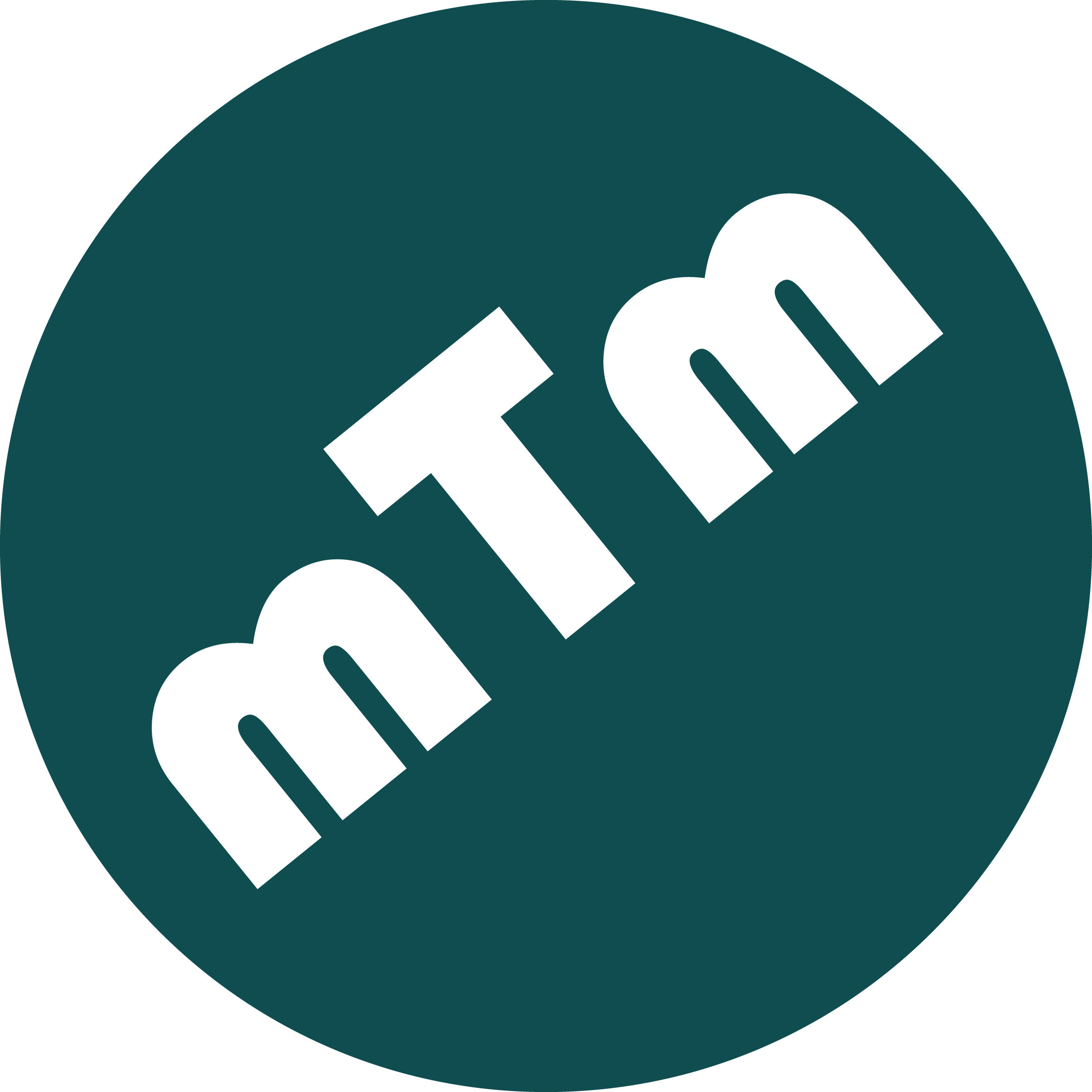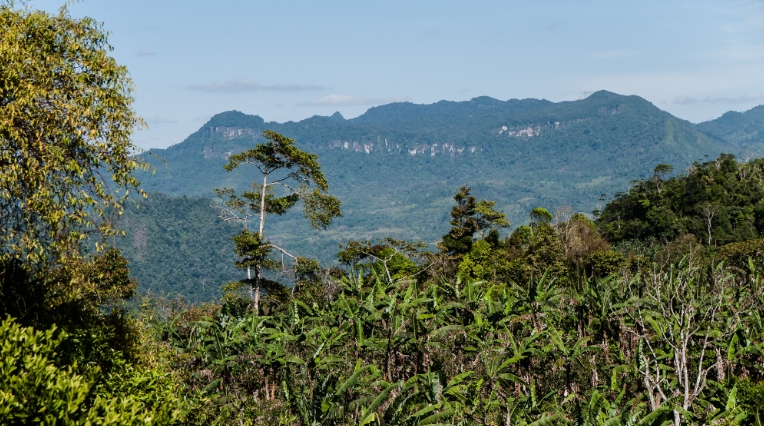Tren a las Nubes, Argentina
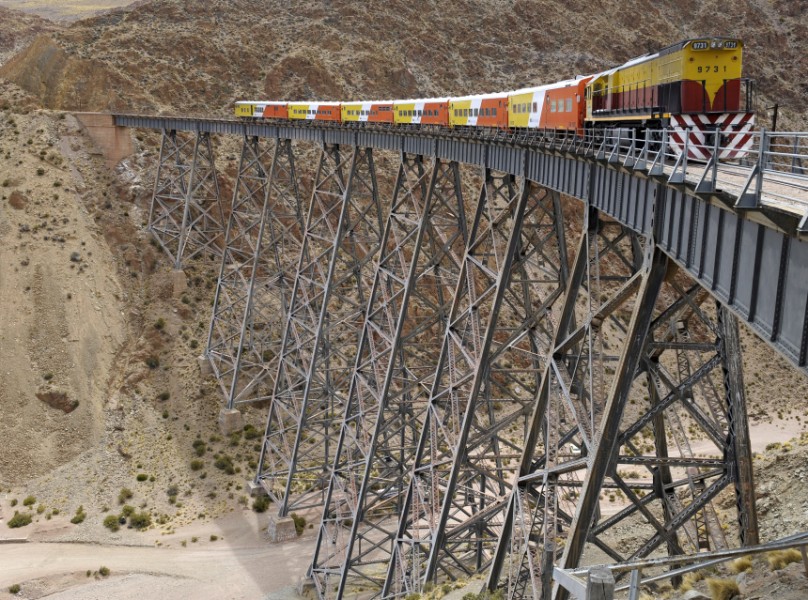
The Tren a las Nubes is a tourist train that runs onto one of the world’s highest railway, in the eastern part of the Salta-Antofagasta railway line, also known as the “C-14”, connecting the Argentine Northwest with the Chilean border in the Andes mountain range, over 4.000 meters above sea level.
That railway track was made to facilitate the transportation of ore between Argentina and Chile, especially saltpeter, of which this area is very rich. The railway construction started in 1921 and the first race of the Tren a la Nubes dates back to 1972. Nowadays the train track is one of the most popular touristic routes in South America.
The railway line has 29 bridges, 21 tunnels and 13 viaducts. The most spectacular view is definitely the viaduct Polverilla: the curved viaduct is 224 m long and 64 m high; here it justifies its name: it is not uncommon, given the height, to see clouds beneath the track, making surreal the train trip that seems to run in the sky.
There are many stops along the way (some with markets selling artisan goods and locals offering regional food), including the town of Ingeniero Maury, (78 Km from Salta), so named in honor of the engineer Richard Fontaine Maury born in Pennsylvania, creator and director of the railway works.
Richard Maury took over the project discarding the rack system commonly at the time. To ensure the safety of passengers and goods he arranged the tracks in a special way so that the train, running through a system of zigzags and spirals, never lose contact with the soil underneath.
Currently, the train route has been reduced to the round trip from San Antonio de los Cobres to the Polvorilla Viaduct.
The complete circuit 2016 (217 km) is served by bus and train: it departs by bus from the city of Salta every Saturday (from April to September; in July also makes midweek departures), crossing Campo Quijano and Governor Solá to reach the spot Alfarcito, through the Quebrada de las Cuevas and then plain Muñano to reach San Antonio de los Cobres, where the travelers boards on the train to the Polvorilla Viaduct.
The train journey takes an hour to the viaduct, at 4.200 meters above the sea level, after 30 minutes back to San Antonio de los Cobres where passengers return to board buses to the city of Salta.
Redwood National and State Parks, U.S.A.
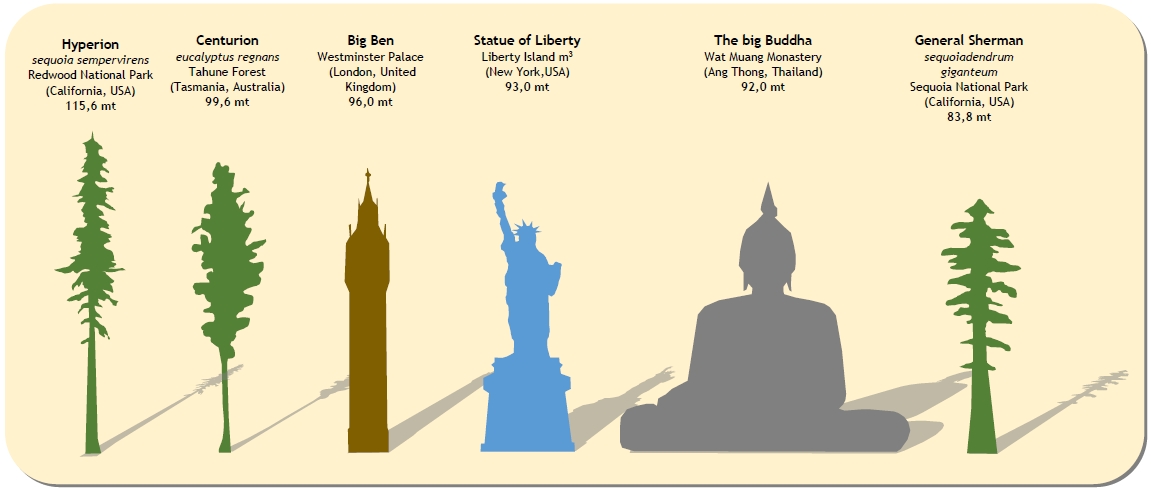
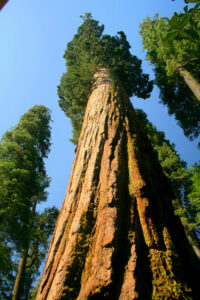
While Hyperion is celebrated for its height, another California resident claims the title for sheer size. General Sherman, a Sequoiadendron Giganteum, is the largest tree in the world by volume.
Found in the Giant Forest of Sequoia National Park in Tulare County, this colossal tree boasts a staggering volume of 1,487 cubic meters. To put this into perspective, its mass is equivalent to over 15 blue whales, making it a true wonder of the natural world.\n\nWhat makes General Sherman even more extraordinary is its incredible lifespan.
Estimated to be between 2,300 and 2,700 years old, it holds the distinction of being one of the longest-lived trees on the planet. Its name honors William Tecumseh Sherman, a general in the American Civil War, whose legacy is immortalized not only in history books but also in this timeless natural marvel.
Visiting these towering trees is akin to stepping into a time machine. Hyperion and General Sherman have weathered millennia, standing resilient through countless storms, fires, and changes in the world around them. These trees are living relics, offering glimpses into prehistoric times when their ancestors thrived alongside dinosaurs.
Beyond their sheer size and age, these ancient giants play crucial roles in their ecosystems. Hyperion and General Sherman, like other sequoias and redwoods, absorb vast amounts of carbon dioxide, helping to mitigate climate change. Their sprawling roots stabilize the soil, preventing erosion, while their canopies provide shelter to diverse species of plants and animals.
The Redwood National and State Parks and Sequoia National Park offer much more than just views of these incredible trees. Visitors can hike scenic trails, marvel at cascading waterfalls, and experience the tranquillity of pristine wilderness. Guided tours and educational programs provide deeper insights into the history and ecology of these majestic forests.
Orkneys Islands, Scotland
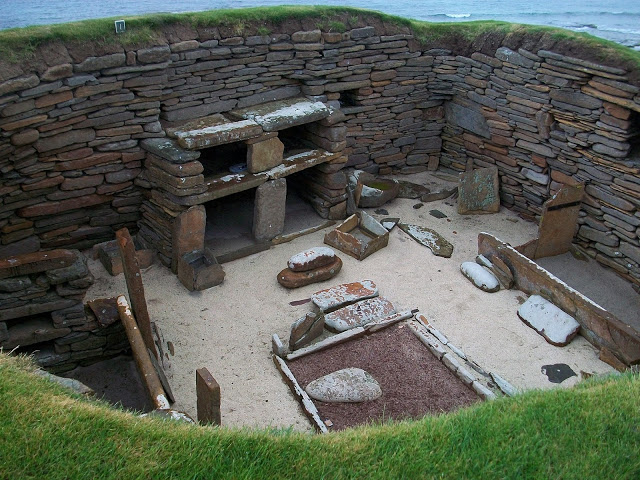
Thanks to the layer of sediments that have hidden and protected the village until 1850, the Neolithic village is kept in perfect conditions despite 5000 years of age (its origins predate the construction of the pyramids of Giza and Stonehenge) and it is considered today one of the best-preserved prehistoric villages in the world.
In the movie Indiana Jones and the Kingdom of the Crystal Skull (2008), Indiana Jones talks about Skara Brae to his students during a class at Marshall College.
At Orkney Islands / Scotland’s Northern coast, you can watch orcas and whales and have a swim in awesome sandy beaches (…beware of the freezing water!).
Bangkok, Thailand

Boundless, hot, smiling and animated by a vibrant nightlife, Bangkok has been elected by the magazine Travel + Leisure the “best city in the world in 2008”.
Bangkok’s floating markets like Damnoen Saduak are vibrant hubs where vendors sell fresh produce and cooked meals directly from their boats.
The Golden Buddha, located in Wat Traimit, is the world’s largest gold statue, weighing 5.5 tons and dating back to the 13th century. With over 400 temples, Bangkok is home to must-visit landmarks like Wat Arun, Wat Phra Kaew, and Wat Pho, which houses the famous Reclining Buddha.
Bangkok’s Chinatown, Yaowarat, is one of the largest and most vibrant in the world, renowned for its bustling markets, Chinese temples, and exceptional street food.
For those seeking something unique, the Siriraj Medical Museum, also called the “Museum of Death,” displays preserved specimens, historical medical artefacts, and even mummies, offering a glimpse into the city’s medical history.
Bangkok’s rooftop bars are legendary, with places like Sirocco at the State Tower offering incredible views of the city’s glittering skyline, making them a highlight for nightlife lovers. From its cultural treasures to its dynamic modernity, Bangkok is a city full of contrasts and endless surprises.
24 Hours in Bangkok – Itinerary
Lake Garda, Italy
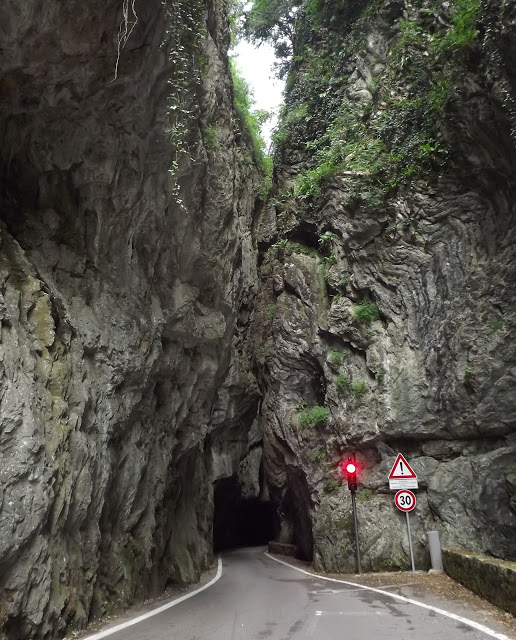
The most spectacular point is the short track through the gorges formed by the Brasa River, crossing dark tunnels and overhanging rocks.
In 2008, the SP 38 was the scene of a car chase starring Daniel Craig as James Bond in the movie Quantum of Solace and in the past of many other films and TV advertisements.
Built between 1908 and 1913, it is still considered one of the most spectacular roads in Italy.
Yellowstone National Park, U.S.A.

Yellowstone National Park, located in the northwest corner of Wyoming and extending into Montana and Idaho, is world-renowned for its iconic bison, erupting geysers, and stunning natural formations. However, beneath its breathtaking surface lies one of the most fascinating and powerful geological features on Earth: the Yellowstone caldera. This immense volcanic crater, formed approximately 630,000 years ago during the cataclysmic Lava Creek eruption, is one of the planet’s few supervolcanoes. Spanning an astonishing 50 kilometers in length and 75 kilometers in width, the Yellowstone caldera is a silent reminder of Earth’s volatile power.
The Yellowstone caldera is situated above one of Earth’s most active geological hotspots. Here, magma rises from deep within the mantle, nearing the surface and creating a dynamic and ever-changing landscape. This hotspot fuels the geothermal wonders that Yellowstone is famous for, from the explosive Old Faithful geyser to bubbling mud pots and steaming fumaroles. Scientists estimate that the destructive potential of the Yellowstone caldera is thousands—possibly millions—of times greater than the atomic bombs dropped on Hiroshima and Nagasaki, highlighting its immense power. Though its next eruption is not expected any time soon, the caldera remains a subject of intense study and fascination.
Among Yellowstone’s many geothermal marvels, the Grand Prismatic Spring stands out as a jewel of color and intrigue. As the largest hot spring in the United States and the third largest in the world, it measures approximately 50 meters (164 feet) deep and 112 meters (370 feet) in diameter. What makes this spring truly extraordinary is its vivid, rainbow-like appearance. The brilliant hues of orange, yellow, green, and blue result from thermophilic microorganisms that thrive in the spring’s varying temperature zones. These microbes produce pigments to adapt to the extreme environment, painting a mesmerizing natural masterpiece that is visible even from above.
While the Grand Prismatic Spring and Old Faithful draw much of the attention, Yellowstone is home to countless other lesser-known yet equally fascinating features. The Morning Glory Pool, for instance, is a hot spring that has transformed over time due to human impact. Once vividly colored, it now displays more muted tones as debris thrown in by visitors has disrupted its geothermal activity.
Yellowstone’s unique geology also gives rise to Yellowstone Lake, the largest high-altitude lake in North America. Beneath its serene surface, hydrothermal vents release heat and gases, creating an underwater landscape as dynamic as the park above ground. These vents are evidence of the park’s persistent volcanic activity, offering a glimpse into the hidden world beneath the caldera.
Beyond its geological wonders, Yellowstone is a sanctuary for diverse wildlife. It is one of the few places in the continental United States where bison roam freely, often spotted grazing near geothermal features. Wolves, reintroduced to the park in 1995, have revitalized the ecosystem, playing a critical role in balancing predator-prey dynamics. Visitors may also encounter grizzly bears, elk, and the elusive wolverine, making Yellowstone a wildlife enthusiast’s paradise.
Despite its grandeur, Yellowstone is a fragile ecosystem. The geothermal features, wildlife, and vegetation are all interlinked in a delicate balance. Human activity and climate change pose threats to this natural wonder, making conservation efforts more important than ever. Visitors are encouraged to tread lightly, respect park guidelines, and support sustainable tourism initiatives to preserve Yellowstone for future generations.
